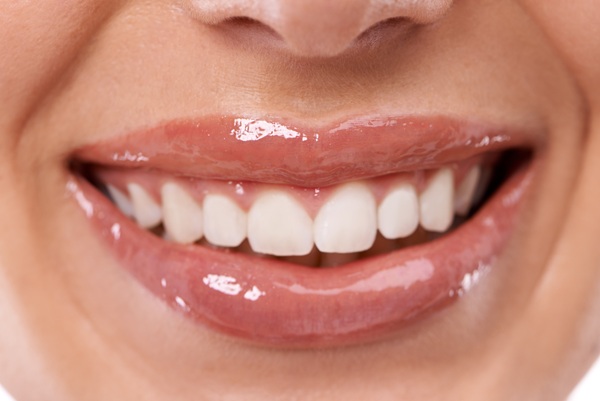If you’ve ever looked in the mirror and wished your smile looked a little better, maybe a chipped tooth, a gap, or some slight discoloration, there’s a good chance you’ve wondered about your options. That’s where composite bonding comes in.
At Bellevue Hill Dental, many of our patients ask us, “Is there a simple way to fix minor imperfections without doing something major?” The answer is yes. Composite bonding teeth is a fast, minimally invasive, and cost-effective treatment that can enhance your smile, often in just one visit.
This blog will help you understand what composite bonding is, when it’s recommended, and what you can expect from the process.
What Is Composite Bonding?
Composite bonding is a cosmetic dental treatment where a tooth-coloured resin is applied and shaped to fix minor imperfections in your teeth. The material is carefully moulded and polished to match the colour, texture, and shape of your natural teeth.
It’s often used to improve the appearance of:
- Chipped or cracked teeth
- Discoloured teeth
- Gaps between teeth
- Teeth that are slightly misaligned or uneven
- Teeth that are too short or worn down
The procedure is pain-free, usually doesn’t require numbing, and best of all, there’s no need to remove any tooth structure in most cases.
How Does Composite Bonding Work?
Step-by-Step Process
Here’s what typically happens during a composite bonding appointment at Bellevue Hill Dental:
1. Consultation and Colour Matching
Your composite bonding dentist will first assess your teeth and talk through your concerns. They’ll help choose a shade of resin that closely matches the rest of your smile for a natural-looking result.
2. Preparing the Tooth
Next, the surface of the tooth is gently roughened and a conditioning liquid is applied. This helps the bonding material stick securely.
3. Applying the Composite Resin
The tooth-coloured resin is then applied, shaped, and sculpted to the desired look. Your dentist will work carefully to match the natural contours of your surrounding teeth.
4. Curing the Material
A special blue light is used to harden the resin in place. This only takes a few seconds.
5. Final Shaping and Polishing
Once the material is set, the dentist will fine-tune the shape and give it a final polish so it blends perfectly with your other teeth.
The whole process takes about 30 to 60 minutes per tooth, and you can walk out the door with a refreshed smile, no downtime needed.
When Is Composite Bonding Recommended?
Not every smile concern needs a crown or veneer. Composite bonding is ideal for patients looking to improve the appearance of their teeth without invasive procedures.
Your dentist may recommend composite bonding if:
- You want to fix a chipped or cracked tooth after an injury
- You have minor gaps between front teeth that you’d like closed
- Your teeth are discoloured and don’t respond well to whitening
- You’re looking for a cosmetic touch-up without major dental work
- You want a more symmetrical smile before a big event or occasion
It’s important to remember that composite bonding is best for small to moderate cosmetic improvements. If you’re looking for major structural changes, your dentist may suggest other treatments such as veneers or crowns.
What Are the Benefits of Composite Bonding?
Choosing composite bonding teeth has several benefits:
- Non-invasive: Most of the time, no drilling or anaesthesia is needed.
- Quick results: Often done in just one visit.
- Affordable: One of the most cost-effective cosmetic options.
- Natural look: Blends in seamlessly with the rest of your smile.
- Reversible: Because your natural tooth is not altered, the treatment can be adjusted or reversed later if needed.
It’s no wonder many patients consider this one of the best composite bonding treatments available, especially when done by an experienced cosmetic dentist.
How Long Does Composite Bonding Last?
With good care, composite bonding can last 3 to 7 years or longer. Its lifespan depends on your oral hygiene habits, the location of the bonding, and whether you clench or grind your teeth.
To help your bonding last:
- Avoid biting on hard objects (like pens or ice)
- Brush twice daily and floss gently
- Limit staining foods and drinks like coffee or red wine
- Visit your dentist regularly for check-ups and cleaning
If the bonding ever chips or wears down, it can usually be repaired in a quick follow-up visit.
Is Composite Bonding Right for You?
Composite bonding is a fantastic option for many patients—but it’s not always the best choice for everyone. During your consultation, your composite bonding dentist will examine your teeth, listen to your goals, and walk you through your best options.
At Bellevue Hill Dental, our goal is to help you feel confident and informed every step of the way. Whether you have a small chip, some staining, or a few gaps you’d like to fix, composite bonding can help you love your smile again.
Let’s Talk About Your Smile Goals
Thinking about improving your smile with composite bonding? Our team at Bellevue Hill Dental is here to guide you. We’ll help you decide if composite bonding is right for you and walk you through what to expect, no pressure, no stress.
Book your consultation today with our experienced cosmetic dental team.



